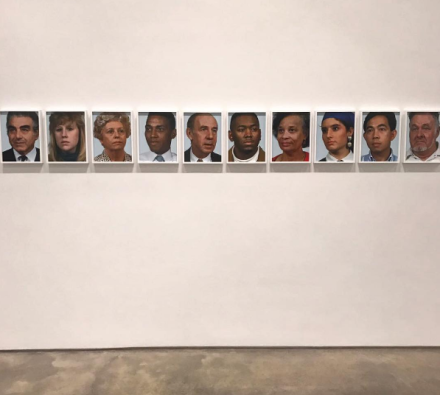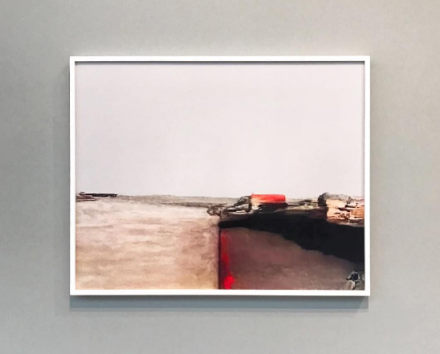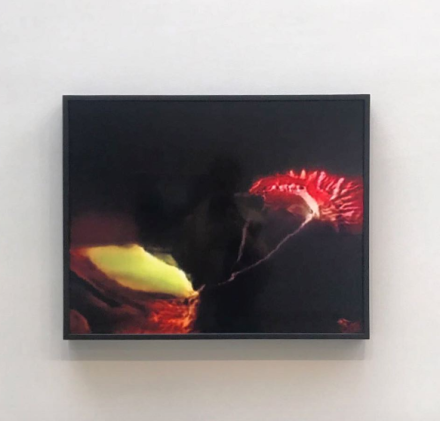
Trevor Paglen, A Study of Invisible Images (Installation View), via Art Observed
Drawing on the increasingly complex relationship between human relations, technological ascendency and the exercise of power that ultimately serves as a negotiating space between these two forces, Trevor Paglen’s work has repeatedly explored how the modern computer processor is ever more embroiled in the fabric of human decision-making and world-building. Having traveled the globe, and even fired a satellite into space to look down on it from outside its atmospheric confines, Paglen’s work delves into the physical architectures, and often otherworldly effects that the modern state of surveillance and speed renders on human understandings of time, space, and even our own perceptions of identity or self.

Trevor Paglen, A Study of Invisible Images (Installation View), via Art Observed
Having recently begun his work as an artist-in-residence at Stanford University, Paglen’s aesthetic and political interests have recently turned towards the impressive tools now placed at his disposal, particularly facial-recognition softwares, 3-d modeling programs, and other technologies on the cutting edge of the modern Silicon Valley’s computational arsenal. This work serves as the center of A Study of Invisible Images, his recently opened solo show at Metro Pictures. Yet rather than take a modernist prompt to these new tools, the artist pushes his interest in structures to the forefront, making the forms and functions of learning libraries and and computer-generated images central to an emphasis on the computer’s own role as both agent and archive in equal time and measure. In the artist’s video installation Behold These Glorious Times! for instance, a collage of images from AI learning libraries underscores a space where the line between human understandings and computer ones become increasingly foggy, particularly as our own reliance on the computer as a social force becomes increasingly intertwined with its own material construction and devices.

Trevor Paglen, A Study of Invisible Images (Installation View), via Art Observed
Paglen’s work pushes a similarly ominous thread in his work Machine-Readable Hito. Feeding hundreds of images of artist Hito Steyerl through various facial recognition algorithms, Paglen created a literal wall of expressions grafted with each program’s own operation on Steyerl’s expression and biometrics. Each image presents a slightly different Steyerl, both in physical presentation, and in the web of data spit out from the machines designed to consume, compute, and analyze her face as raw information.

Trevor Paglen, A Study of Invisible Images (Installation View), via Art Observed
It’s these moments of fallibility that seem to persevere throughout Paglen’s exhibition, perhaps by a sort of dual operation that both maps out the wildly impressive capacity of modern technology to turn the human body, and the world around it, into a stream of data, yet equally presents the very limits of modern technological abilities. Even more fascinating is the consideration that Paglen’s work in distinguishing these limits through the often unorthodox or free-associative practices of the contemporary artist might in fact be used to ultimately improve and strengthen these same programs. This note may even be the most enduring of the exhibition, where the viewer is not only aware of the rapid progress and materiality of the modern computational super-complex, but equally its own self-accumulating properties.
The show is on view through October 21st.

Trevor Paglen, A Study of Invisible Images (Installation View), via Art Observed
— D. Creahan
Read more:
Trevor Paglen: A Study of Invisible Images [Metro Pictures]



